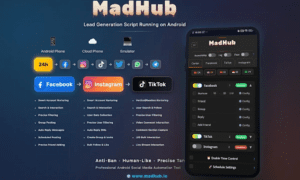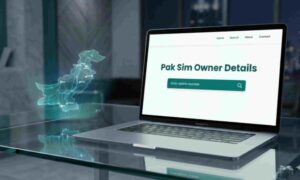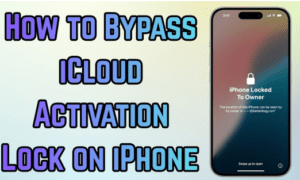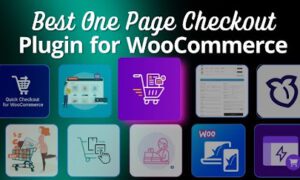Building an email list is a powerful and essential marketing strategy for businesses of all sizes. An email list allows you to directly connect with your target audience, nurture relationships, and drive engagement and sales.
In this article, we will explore six effective ways to build your email list, helping you expand your reach, increase brand loyalty, and achieve your marketing goals.
1. Create Compelling Lead Magnets
Offer valuable and relevant lead magnets, such as e-books, whitepapers, webinars, or exclusive content, to incentivize visitors to subscribe to your email list. Ensure that your lead magnets align with your target audience’s interests and address their pain points. For this, you need to understand why people buy and use it to sell your product.
Let’s say you run an online fitness coaching business. Your target audience includes individuals interested in improving their fitness and nutrition habits. To create a compelling lead magnet, you could offer a free “7-Day Healthy Meal Plan and Recipe Guide.” This guide would provide a week’s worth of nutritious and delicious recipes, along with a shopping list and tips for healthy eating.
When visitors arrive on your website, they see a popup inviting them to download the “7-Day Healthy Meal Plan and Recipe Guide” by subscribing to your email list. Since the lead magnet aligns perfectly with the interests of your target audience, many health-conscious visitors would be motivated to subscribe to access the valuable content.
Once they subscribe, you not only have their email address but also know they are genuinely interested in healthy eating. This gives you an opportunity to nurture the relationship, provide additional relevant content, and eventually promote your fitness coaching services to them.
2. Optimize Your Website for Email Capture
Strategically place email opt-in forms on your website, including pop-ups, slide-ins, and embedded forms on high-traffic pages. Make it easy for visitors to subscribe by keeping the form simple and asking for minimal information.
Here are some key steps to optimize your website for email capture:
- Placement of Opt-In Forms: Place email opt-in forms in prominent locations on your website, such as the homepage, sidebar, footer, and within relevant blog posts. Consider using pop-ups or slide-ins that appear at specific triggers, such as time spent on the page or when a user is about to exit the site (exit-intent pop-ups).
- Use Eye-Catching CTAs: Create compelling and action-oriented CTAs that clearly convey the benefits of subscribing to your email list. Use persuasive language that encourages visitors to take action, such as “Join Now for Exclusive Updates” or “Get Access to Insider Tips.”
- Keep Forms Simple: Ask for minimal information on your opt-in forms, usually just the email address and, optionally, the first name. Lengthy forms can deter potential subscribers. You can collect more information later in your email marketing campaigns as you nurture the relationship.
- Offer Incentives: Provide an incentive for visitors to subscribe, such as a discount on their first purchase, access to exclusive content, or a free resource like an e-book or checklist. This motivates visitors to take action and join your email list.
- Mobile Responsiveness: Ensure that your email opt-in forms are mobile-friendly and easy to use on smartphones and tablets. With the increasing number of users accessing websites via mobile devices, this step is crucial for capturing leads effectively.
- A/B Testing: Test different variations of your opt-in forms, CTAs, and incentives to see which ones perform best. A/B testing allows you to optimize your email capture strategy based on real data and user behavior.
3. Implement Exit-Intent Pop-Ups
Exit-intent pop-ups are a specific type of popup that appears when a website visitor is about to leave the site, either by moving their cursor towards the browser’s close button or navigating to another tab. These pop-ups are triggered based on user behavior and aim to capture the visitor’s attention at the moment they are most likely to leave, offering them an enticing reason to stay or take action.
Exit-intent pop-ups can be highly effective in reducing website bounce rates and increasing conversions. They provide a last chance to engage with visitors who are about to leave and can help with various goals, such as growing your email list, promoting special offers, or gathering feedback.
Suppose you run an online fashion store, and a visitor is browsing your website, viewing various products, but has not added anything to their cart. As they move their cursor towards the browser’s close button, an exit-intent pop-up appears. The pop-up offers them a 10% discount on their first purchase if they subscribe to the store’s email list. The pop-up displays an eye-catching image of a stylish outfit and a clear CTA that says, “Get 10% Off Your First Order! Stay updated with our latest collections and exclusive offers.” The user decides to subscribe, enticed by the discount, and is now part of your email list. By using exit-intent pop-ups strategically, you can capture the attention of visitors who are about to leave, re-engage them with valuable offers, and potentially convert them into loyal customers.
4. Host Webinars or Virtual Events
Hosting webinars or virtual events is an effective way to engage with your target audience, share valuable knowledge, and build a sense of community around your brand. Webinars are live online presentations or workshops that allow participants to interact with hosts in real-time. Virtual events can include conferences, workshops, Q&A sessions, and panel discussions conducted over digital platforms.
Suppose you run a software company specializing in project management tools. To host a webinar, you could choose a topic like “Efficient Project Management for Remote Teams.” In the weeks leading up to the webinar, you promote it through email campaigns, social media posts, and blog articles. During the webinar, you present tips and best practices for managing remote teams effectively, using real-world examples and case studies.
Participants can ask questions and share their experiences through live chat. Towards the end of the webinar, you introduce your project management tool as a solution for streamlining remote team collaboration.
After the event, you send a follow-up email to all attendees, providing them with a link to the webinar recording and additional resources on remote project management. You also offer a limited-time discount on your project management tool for those who attended the webinar, encouraging them to take action.
5. Run Contests and Giveaways
Contests and giveaways are exciting promotional activities that can help your business attract attention, engage your audience, and grow your email list. By offering participants a chance to win valuable prizes or receive freebies, you create a sense of urgency and excitement that encourages them to participate and share the contest with others, increasing your reach and potential customer base. Before you begin, you can take the help of predictive analytics tools to analyze the effectiveness of contests.
Suppose you own a gourmet coffee shop and want to increase engagement with your brand while expanding your email list. To run a contest, you decide to host a “Coffee Lover’s Dream Giveaway.” You promote the contest on your social media channels, website, and through email marketing. The contest offers participants a chance to win a deluxe coffee gift basket containing various premium coffee blends, a stylish coffee mug, and a gift card for a free month’s supply of coffee. To enter, participants must provide their email addresses and follow your coffee shop’s Instagram page. They can earn additional entries by sharing the contest post and tagging friends who also love coffee. As the contest progresses, your brand gains increased exposure as participants share the giveaway with their networks. Each time someone enters the contest, you capture their email address, growing your email list with coffee enthusiasts genuinely interested in your products. After the contest ends, you announce the winner and send personalized email campaigns to
6. Use Social Media Lead Generation Ads
Social media marketing offers great advantages. Lead generation ads are targeted advertisements designed to capture leads and grow your email list directly from social media platforms. These ads leverage the vast user base and advanced targeting capabilities of platforms like Facebook, Instagram, Twitter, LinkedIn, and others to reach your ideal audience and encourage them to subscribe to your email list.
Best Practices for Social Media Lead Generation Ads:
- Clear Value Proposition: Clearly communicate the value of subscribing to your email list in the ad copy to entice users to take action.
- Eye-Catching Visuals: Use visually appealing images or videos that align with your brand and capture users’ attention as they scroll through their feeds.
- Simple and Relevant Form Fields: Keep the form fields on the lead generation ad simple, typically asking for an email address and optionally the first name.
- Strong Call-to-Action (CTA): Use a compelling CTA that encourages users to subscribe, such as “Sign Up Now,” “Get Started,” or “Claim Your Free Guide.”
- Mobile Optimization: Ensure that your lead generation ads are optimized for mobile devices, as a significant portion of social media users access platforms on smartphones and tablets.
Conclusion
Building an email list is a valuable asset for any business seeking to establish strong customer relationships and drive sales.
By implementing the six effective strategies outlined in this article, you can grow your email list with engaged subscribers who are genuinely interested in your products or services.
Remember to continually optimize your email marketing efforts, provide valuable content, and maintain a consistent and personalized communication approach to foster long-term customer loyalty and business success.



































